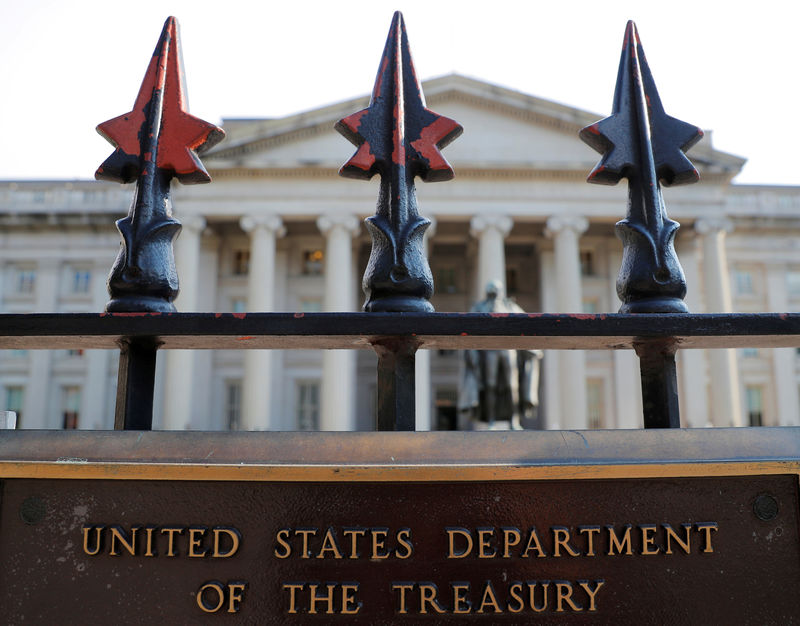(Bloomberg) -- Federal Reserve Chairman Jerome Powell beat back the market’s most aggressive predictions for the path of interest rates Wednesday, setting off a dovish surge in stocks and bonds.
But in pouring cold water on the prospect for a jumbo-sized 75 basis point rate hike next month, he may have inadvertently set the stage for more turbulence going forward.
The Fed was “trying to send a message of sustained expectations for 50 basis point increases,” but “unintentionally gave a very dovish message,” Jeffrey Rosenberg, senior portfolio manager for systematic multi-strategy at BlackRock Inc (NYSE:BLK)., said on Bloomberg Television. That caused an “easing of financial conditions, at least for today.”
That’s the opposite of what most would ordinarily want in order to crimp inflation that’s at the highest level in decades. And it’s already prompting some market watchers to wonder just how long the Fed can stick to its current approach.
For now, traders have moved firmly back toward pricing a half-point increase for June -- in line with Powell’s comments that several such hikes are on the table for the Fed’s upcoming meetings -- and curtailed expectations for the longer-term path for rates.
Powell surprised some, including Rosenberg, by saying policy makers consider a neutral fed funds rate, the level at which the central bank would cease hiking, to be between 2% and 3%.
Doubts even began to emerge Wednesday that the Fed will push through with 50 basis point hikes at each of its next three gatherings, once considered a virtual certainty. Less than 150 basis points of additional tightening is fully priced across the June, July and September meetings.
Yet although the market action signaled a capitulation by traders to a more genteel pace of tightening, there are question marks over how long those assumptions can last -- for the market, and for the Fed. It’s still a very rocky road ahead, with pivotal economic data and global developments due within days.
On Friday, policy makers and traders will digest the latest official reading on the U.S. labor market, with particular focus likely to be on how wages are evolving. And just over the horizon next week, the government is set to release a new round of consumer-price index data. How the war in Ukraine and severe Covid-related lockdowns in China continue to unfold could also add new wrinkles, especially crucial as the Fed stressed Wednesday the inflationary affects of both.
If price pressures rise further due to supply factors and “places them in a bind” where they keep tightening and hurt demand, the Fed could end up with a “stagflationary outcome,” said Dec Mullarkey, managing director at SLC Management. And with Powell affirming the neutral policy rate is between 2% and 3%, “the market has done much of the heavy lifting, with rates seen ending the year around 2.75%.”
Market-based inflation expectations bubbled higher Wednesday with the so-called breakeven rate on 10-year Treasuries, a proxy for price gain expectations, jumping around 5 basis points to 2.88%.
The 2-Year Treasury rate, meanwhile, plunged as much as 18 basis points to just under 2.6%, before recovering to about 2.64% later in the day as traders siphoned off the amount of policy-rate tightening they anticipate through the rest of the year. Ten-Year yields dropped almost 4 basis points to 2.93%, while the Bloomberg Dollar Spot Index was down 0.9% and the S&P 500 notched its biggest rally for a Fed-decision day in more than a decade.
At Wednesday’s close, the swaps market showed the Fed’s policy rate climbing to around 2.78% by year end. Earlier in the day it came within a whisker of 3%.
Powell “and the FOMC can still change their mind if circumstances warrant,” Roberto Perli, the head of global policy at Piper Sandler, wrote in a note with his colleague Benson Durham, referring to Powell pushing back on a 75 basis-point hike. “We wouldn’t be surprised if the 75-basis-point idea resurfaces, as a contingency only in case inflation continues to surprise to the upside.”
